
Commer was a British manufacturer of commercial and military vehicles from 1905 until 1979. Commer vehicles included car-derived vans, light vans, medium to heavy commercial trucks, and buses. The company also designed and built some of its own diesel engines for its heavy commercial vehicles.

A diesel–electric transmission, or diesel–electric powertrain is a transmission system for vehicles powered by diesel engines in road, rail, and marine transport. Diesel–electric transmission is based on petrol–electric transmission, a very similar transmission system used for petrol engines.
A semi-automatic transmission is a multiple-speed transmission where part of its operation is automated, but the driver's input is still required to launch the vehicle from a standstill and to manually change gears. Semi-automatic transmissions were almost exclusively used in motorcycles and are based on conventional manual transmissions or sequential manual transmissions, but use an automatic clutch system. But some semi-automatic transmissions have also been based on standard hydraulic automatic transmissions with torque converters and planetary gearsets.
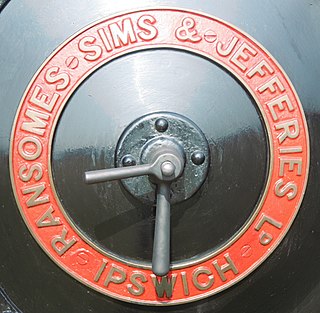
Ransomes, Sims and Jefferies Limited was a major British agricultural machinery maker also producing a wide range of general engineering products in Ipswich, Suffolk including traction engines, trolleybuses, ploughs, lawn mowers, combine harvesters and other tilling equipment. Ransomes also manufactured Direct Current electric motors in a wide range of sizes, and electric forklift trucks and tractors. They manufactured aeroplanes during the First World War. Their base, specially set up in 1845, was named Orwell Works.

Seddon Atkinson Vehicles Limited, a manufacturer of large goods vehicles based in Oldham, Greater Manchester, England, was formed after the acquisition in 1970 of Atkinson Vehicles Limited of Preston by Seddon Diesel Vehicles Limited of Oldham. In 1974, the firm was acquired by International Harvester, which sold it in March 1984 to the Spanish group Enasa which made it a subsidiary of Pegaso. In 1990, it became part of Iveco which used the brand for various types of specialised vehicles in the United Kingdom. The range of models produced included EuroMover, Pacer and Strato, which are aimed at refuse collection, recycling and construction operators.

The Vulcan Motor and Engineering Company Limited, of Southport, England, made cars from 1902 until 1928 and commercial vehicles from 1914 until 1953.

Guy Motors was a Wolverhampton-based vehicle manufacturer that produced cars, lorries, buses and trolleybuses. The company was founded by Sydney S. Guy (1885–1971) who was born in Kings Heath, Birmingham. Guy Motors operated out of its Fallings Park factory from 1914 to 1982, playing an important role in the development of the British motor industry.

Karrier was a British marque of motorised municipal appliances and light commercial vehicles and trolley buses manufactured at Karrier Works, Huddersfield, West Yorkshire, by Clayton and Co., Huddersfield, Limited. They began making Karrier motor vehicles in 1908 in Queen Street South, Huddersfield. In 1920, H.F. Clayton sold Clayton and Co's Huddersfield business into public listed company Karrier Motors while keeping their Penistone operation separate. Mechanical and electrical engineers Clayton & Co Penistone, remain active in 2020 as Clayton Penistone Group.
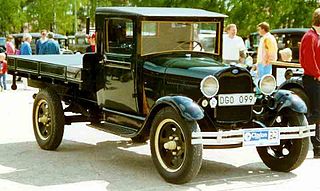
Ford Model AA is a truck from Ford. As the Model T and TT became obsolete and needed to be replaced, Henry Ford began initial designs on the Model A and Model AA in 1926. Basic chassis layout was done rapidly and mechanical development was moved forward quickly. Body design and style was developed and then outsourced to various body manufacturers, including Briggs and Murray. The designs of the Model A shared parts and materials with the Model AA Ford, notably the body, engine and interior. The AA usually received plainer interiors than their car counterparts. The Model AA followed similar design changes to the Model A during the AA's four years in production, often delayed anywhere from three to nine months. The mechanical changes and upgrades were done during production of the vehicles. Body changes that occurred between 1929 and 1930 were also integrated into AA production, but leftover parts were used longer in the heavy commercial trucks.
Hybrid vehicle drivetrains transmit power to the driving wheels for hybrid vehicles. A hybrid vehicle has multiple forms of motive power.

Bristol Commercial Vehicles was a vehicle manufacturer located in Bristol, England. Most production was of buses but trucks and railbus chassis were also built.
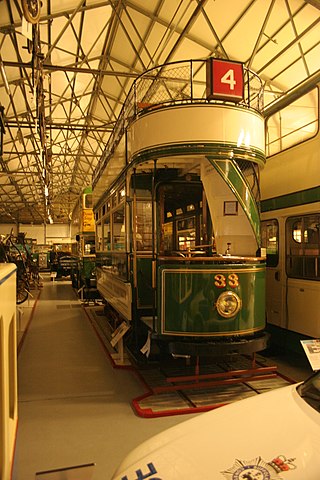
The Ipswich Transport Museum is a museum in Ipswich, Suffolk, England, devoted principally to the history of transport and engineering objects made or used in its local area.

The Bedford CA was a distinctive pug-nosed light commercial vehicle produced between 1952 and 1969 by Bedford in Luton, England.

The Bedford CF was a range of full-size panel vans produced by Bedford. The van was introduced in 1969 to replace the CA model, and was sized to compete directly with the Ford Transit, which had entered production four years earlier. Its design was similar to its American counterpart, the Chevrolet Van (1971–1995).
Rocar was a van, light truck, bus and trolleybus manufacturer based in Bucharest, Romania. The firm also produced light offroad vehicles and later heavy road vehicles. During its existence, the company produced over 350,000 vehicles.
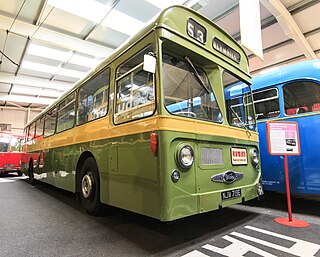
The Daimler Roadliner was a single-decker bus and coach chassis built by Daimler between 1962 and 1972. Notoriously unreliable, it topped the 1993 poll by readers of Classic Bus as the worst bus type ever, beating the Guy Wulfrunian into second place. It was very technologically advanced, offering step-free access some 20 years before other buses; as a coach, it was felt by industry commentators to be in advance of contemporary UK designs.

The Leyland Tiger was a heavyweight half-cab single-decker bus and coach chassis built by Leyland Motors between 1927 and 1968, except the period of World War II.

Car controls are the components in automobiles and other powered road vehicles, such as trucks and buses, used for driving and parking.
Petrol–electric transmission or gasoline–electric transmission or gas–electric transmission is a transmission system for vehicles powered by petrol engines. Petrol–electric transmission was used for a variety of applications in road, rail, and marine transport, in the early 20th century. After World War I, it was largely superseded by diesel-electric transmission, a similar transmission system used for diesel engines; but petrol-electric has become popular again in modern hybrid electric vehicles.
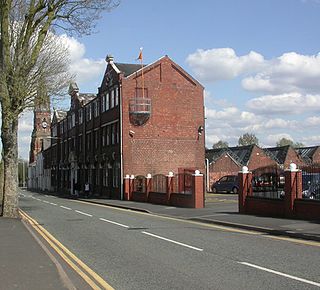
Sunbeam Commercial Vehicles was a commercial vehicle manufacturing offshoot of the Wolverhampton based Sunbeam Motor Car Company when it was a subsidiary of S T D Motors Limited. Sunbeam had always made ambulances on modified Sunbeam car chassis. S T D Motors chose to enter the large commercial vehicle market in the late 1920s, and once established they made petrol and diesel buses and electrically powered trolleybuses and milk floats. Commercial Vehicles became a separate department of Sunbeam in 1931.



























